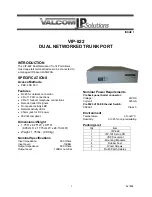
5. The remaining parameters are read-only and provide information on the GPS status and
location.
5
QoS Management
NOTE: The QoS capabilities are only relevant for
Standalone
configuration. In ASN-GW mode,
QoS management is performed through the ASN-GW.
By default, Subscriber Stations (SS) are assigned a Best Effort (BE) service profile for the UL
and DL channels. Only the maximum bandwidth can be configured for the default service profile.
In addition, any SS can be assigned a number of user defined uplink and downlink Service Flows
(SF) that together make up the service profile corresponding to the QoS requirements of that SS.
For example, a profile can consist of the following service flows: a flow matching VoIP needs,
another matching video conferencing needs and a third matching web browsing needs.
The service flows are defined and allocated as SS profiles through the
Subscribers
set of
screens.
5.1
QoS Definition Flow
The steps below summarize the procedure for defining SFs and assigning them to SSs (as a
QoS profile):
1.
Define a set of Service Flows (SFs) for the UL and for the DL.
2. For each SF define the relevant attributes: Classification-Rule-Priority, Scheduling, Min and
Max rates, Latency, etc.
3. For each defined SF, you may define relevant classifiers. These are used to determine the
traffic to which this rule (SF) will be applied.
The traffic can be defined according to the source of traffic or according to the type or any
(logical OR) combination: DSCP range, port range, IP address source or destination, etc.
4. Define the MAC address of the SS to which the SFs will be assigned.
5. Define a QoS profile to the selected SS by assigning it the relevant Service Flows.
Note: For every SF change, it is required to perform service-restart to any CPE to which that SF
has been allocated.
© CalAmp Sentry 4G-900 Pico Base Station
35
















































